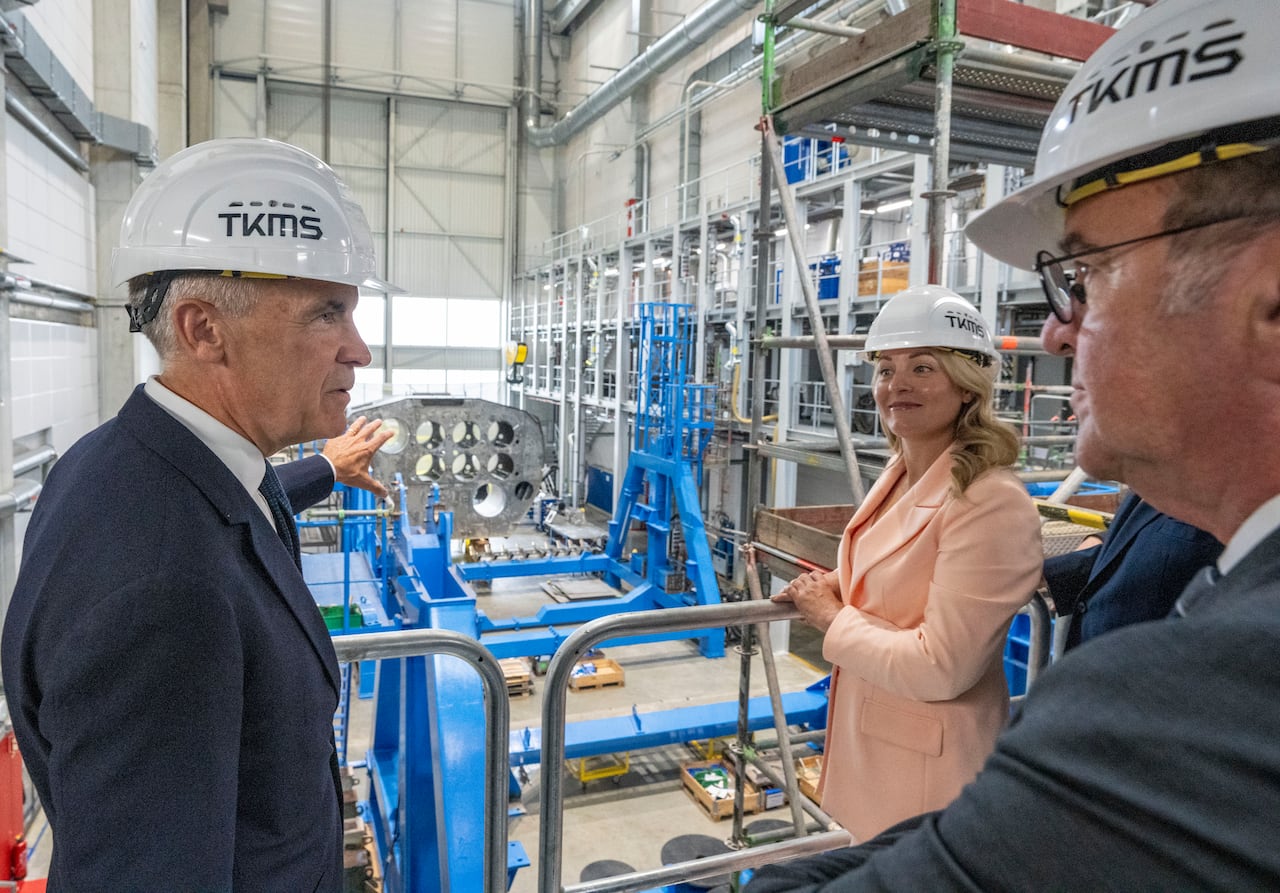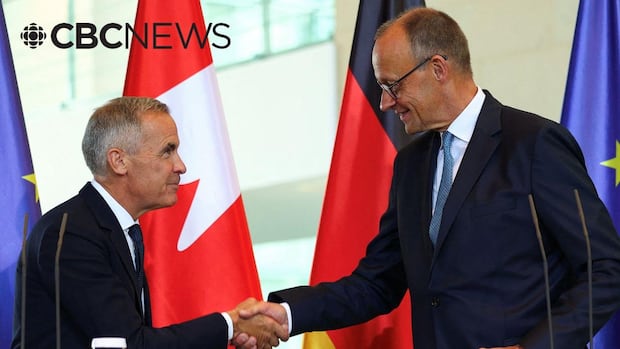South Korea lent political weight to its bold and costly bid to sell submarines to Canada on Thursday when Prime Minister Mark Carney toured one of the country's new boats and visited the shipyard where construction will take place.
South Korean Prime Minister Kim Min-suk accompanied Carney on his visit to Hanwha Ocean Ltd. in Geoje, 96 kilometers from Gyeongju, where the Asia-Pacific Cooperation (APEC) summit is taking place. Earlier in the day, Carney also met with new South Korean President Lee Jae-myung.
Hanwha Ocean and its partner Hyundai Heavy Industries have been quite aggressive in promoting the KSS-III (Batch 2) submarine in Canada, submitting an unsolicited detailed proposal to the federal government last winter – just before the last election.
The submarine Carney saw had just recently been launched and built for the South Korean Navy. However, in a bold marketing move, a Canadian flag was flown on its mast, and a second boat under construction nearby was flown with Korean and Canadian flags.
Aging submarines will retire by 2035
Showcasing the submarine under construction to the prime minister was a not-so-subtle demonstration by the Koreans that their production lines are active and that they can deliver on a promise to deliver four submarines to Canada by 2035, the deadline set by the Navy to begin decommissioning the four older Victoria-class boats.
Also taking part in the trip were Defense Minister David McGuinty and Vice Admiral Angus Topshey, Commander of the Royal Canadian Navy.
“This is a beautiful submarine,” Topshi told reporters on Thursday. “I am very impressed by the size of the submarine, the quality of the crew accommodation, the location of the combat information center from where the submarine is controlled. This is an impressive boat.”
Carney made no comment after the tour and meeting with company executives.
Executive Director of Hanwha OceanSteve Chon, a former vice admiral in the Korean Navy, said Carney had many specific questions and seemed impressed by what he saw.
The visit was significant because it is a sign that the federal government is ready to make a decision quickly, perhaps as early as next year.
While in Berlin in August, Carney announced that the search for several submarine manufacturers had narrowed to two companies: Hanwha Ocean and ThyssenKrupp Marine Systems (TKMS) of Kiel, Germany, which the prime minister visited.
South Korea's competitor: Germany
One downside to the German proposal is that Canada likely won't see the first submarine built by TKMS until 2032, with the remaining boats arriving later in the decade.
The submarine replacement program will be managed by the newly created Defense Investment Agency (DIA).
Cabinet Secretary Stephen Fuhr said several weeks ago that Ottawa would prioritize the submarine project that would create the most jobs in Canada when deciding whether to award a contract.
Canadian shipyards have neither the capacity nor the technical know-how to build submarines. But the CEO of TKMS and the German procurement minister have suggested that building part of the boat in Canada might be possible.
On Thursday, however, McGuinty seemed cool to the idea.
“We are now well on our way to purchasing with two established manufacturers: one in Germany and one here in Korea,” McGinty said. “And having visited both of their facilities, I can say the following: creating a site for the production of submarines is not an easy task. “

Topshi was more direct, saying that he needed the boats right now.
“To be honest, we are not looking for any of the submarines to be built in Canada because Canada doesn't have any submarine building capacity right now,” Topshi said, referring to both the Korean and German proposals. “Ultimately, how the government decides to act is the government’s decision.”
WATCH | Canada has not bought new submarines for a long time:
Both the Korean and German submarines meet the Navy's requirements, but Topshi admitted that the replacement project does not yet have an approved budget.
The numbers are still being refined by defense planners, he said.
“I’m not sure when the government will decide on full funding,” Topshi said. “I expect that this does fit into the government's commitment to achieving the NATO target of five percent,” he continued, referring to Canada's pledge to increase defense spending.
McGuinty acknowledged that the budget has not yet been approved and did not say when that would happen. He echoed Topshi in saying that replacing the submarine would be included in this NATO task.
“Canada is committed to achieving its two per cent GDP. [NATO] the goal is by March 31,” the minister said. “We're on our way.”
Cost of underspending
The tour came a day after the Parliamentary Budget Office released a report calculating how much the Trudeau government has spent on equipment over seven years.
Between fiscal years 2017-18 and fiscal years 2023-24, actual capital defense spending fell $18.5 billion short of targets, according to an analysis released Wednesday.
Prime Minister Mark Carney announced that the field of bidders for Canada's new submarines has been narrowed to two contenders: Germany's TKMS and South Korea's Hanwha Ocean.
The estimate does not take into account the Carney government's recent commitment to achieving NATO's defense spending target of five percent of GDP.
But this casts doubt on the ability to get there.
“The scale of the planned increase raises questions about the government's ability to manage a higher volume of procurement activity and the ability of the domestic defense industry to support it,” the report said.









